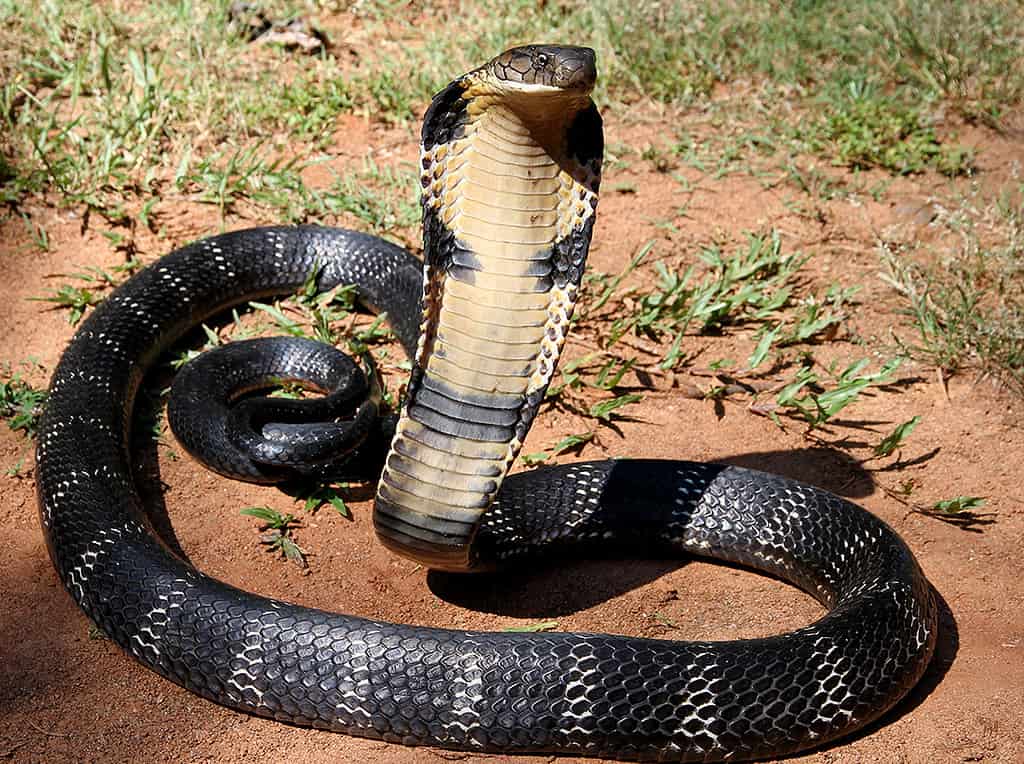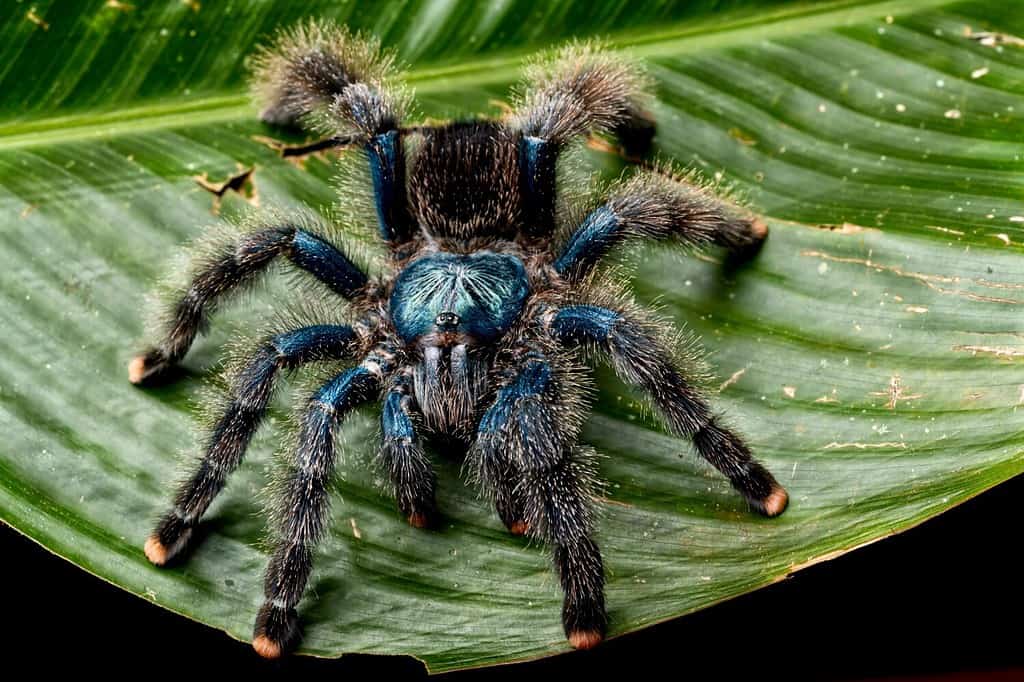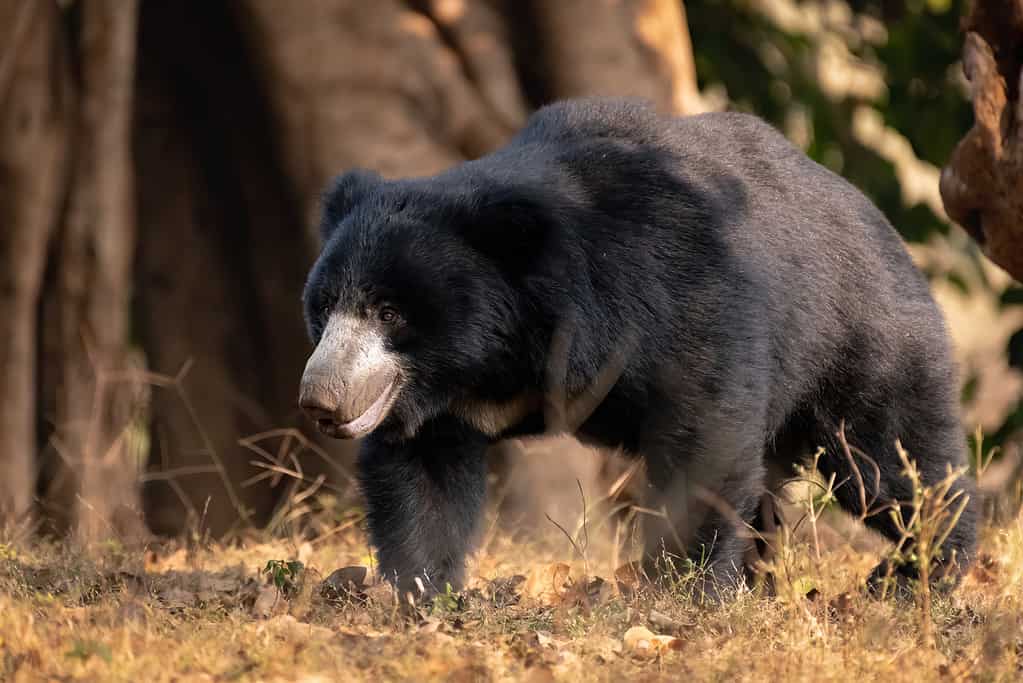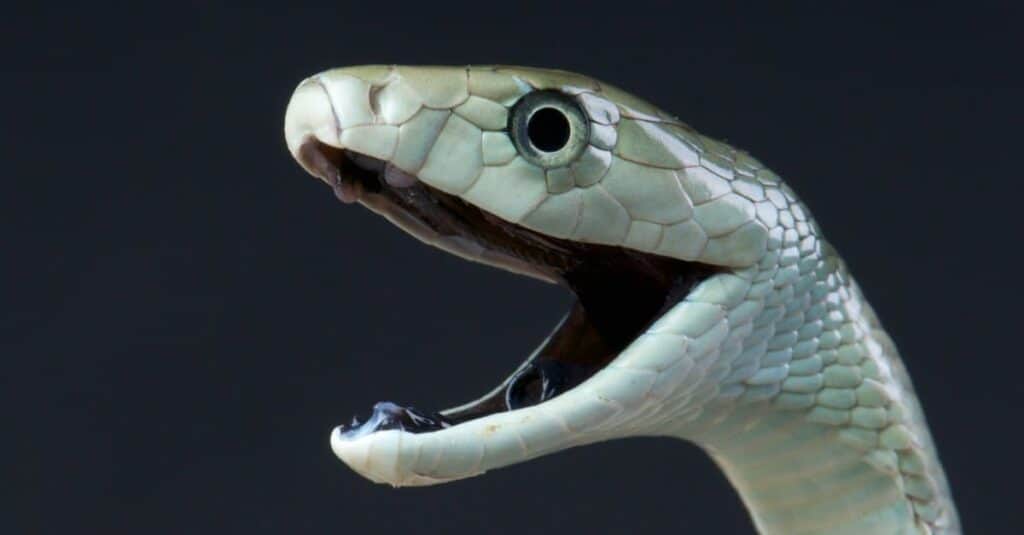Animals use a wide variety of adaptations to stay safe in their habitats. One type of adaptation is fangs. Fangs are large sharp teeth, typically in the front of the mouth, that can be used for protection in situations of attack or for killing prey.
In snakes, fangs are the carriers of venom. In other animals, however, they’re just sharp teeth. Generally, they show up in carnivores and omnivores who use them to kill prey, but a few herbivores have fangs, as well.
There are many species in the world that use fangs. Here’s a complete list of twenty-seven animals that have fangs!
1. Hippopotamus
Hippopotamuses are ginormous mammals equipped with large fangs. While these large creatures are certainly intimidating, hippos don’t prey on animals. In fact, they’re herbivores! They live in Sub-Saharan Africa and their diet is primarily grasses and plants. So why do they have fangs?
While hippos don’t eat other animals, they do often have to fight. Their fangs are used as weapons in fights with other hippopotamuses!
2. King Cobra

King Cobras are the longest venomous snakes on the globe!
©Michael Allen Smith from Seattle, USA, CC BY-SA 2.0 – Original / License
Many, not all, snakes are equipped with fangs. The King Cobra is a long, venomous snake with two small fangs. The fangs measure only a half-inch in size, but this is because the cobra needs to conceal the fangs within its small mouth. Venomous snakes use their fangs to deliver venom. The venom gland is close to the tooth, and then the tooth either has a groove superficially or an enclosed canal that can carry the venom through the teeth.
Another interesting fact about King Cobras is that their fangs are angled backward. This helps to maneuver prey down into the stomach of the snake.
3. Baboon
Some species of monkeys possess fangs, including baboons! Baboons are large and strong monkeys. These primates are omnivores, feeding on fruit and insects. However, their fangs also enable them to kill small animals swiftly. Additionally, baboons use their fangs to demonstrate dominance over other male baboons in their territory.
4. Sharks
Sharks are known for their sharp fangs. These giant fish possess fangs for the purpose of killing their prey, which include sea lions, seals, fish, and other invertebrates. The fangs of sharks are some of their best assets when it comes to offense, as well as defense.
5. Tigers
Many species of big cats have fangs, including tigers. These carnivores live in Asia and Eurasia and feed on deer, cattle, and boar. In order to execute their kills, they need some strong teeth to help them. The fangs on tigers tear the prey and allow the cat to defend itself. Tigers are the largest cats in the world!
6. Jaguars

The biggest threat to jaguars is hunting and loss of habitat.
©Ewan Chesser/Shutterstock.com
Jaguars, like tigers, are big cats equipped with big teeth! These felines live primarily in Central and South America. They are also carnivorous, feeding on deer, capybara, and tapir. These cats, just like tigers, use their fangs for feeding as well as protection.
7. Leopards
Leopards are another species of big cats that are equipped with fangs. These felines live in Africa and southern Asia and feed on deer, warthog, and rodents. They use their fangs to capture and consume prey. They spend a lot of their time in trees, but their fangs are still vital to their livelihood.
8. Lions
Lions are large, carnivorous cats that feed on some giant animals. The fangs that lions are equipped with help them to win battles against their prey, which include antelope and zebra. Male lions are also extremely aggressive, and can often use their teeth to kill one another.
9. Vampire Bats
Vampire bats are omnivorous bats that are equipped with fangs (hence their playful name). These bats in Central and South America exhibit hematophagy, meaning that an important source of their food is the blood of other animals. They use their fangs to cut into their prey.
10. Wolverine
The wolverine is another species equipped with fangs for the purpose of survival. They’re omnivores, but they have a preference for meat. These creatures are extremely aggressive and dine on prey much larger than themselves. They often wait until their prey is dead, and then use their fangs to tear into the meat.
11. Tarantula

There are 900 species of tarantulas!
©reptiles4all/Shutterstock.com
Tarantulas are a species of spiders that are equipped with fangs! Tarantulas are venomous, and their fangs, similar to snakes, carry venom from their venom glands into their victims. However, due to the size of their fangs, a bite isn’t incredibly painful. Apparently, it’ll feel a lot like a bee sting.
12. Eastern Diamondback Rattlesnake
Eastern diamondback rattlesnakes are another species of venomous snakes. Like other snakes that carry venom, the fangs are used to bite and impart the venom to their victims. It’s the largest species of rattlesnake in the world, and its venom makes it one of the most dangerous rattlers there is.
13. Wolf
Many species in the canine family are equipped with fangs, including wolves. These animals use their fangs for prey consumption. The fangs of wolves, specifically, are utilized for holding the prey in their mouths. Wolves have four types of teeth, and each serves a unique purpose in the canine’s life.
14. Domestic Cats
Just like their large relatives, domestic cats are equipped with fangs. While some outdoor cats may put their fangs to use to capture small prey like mice, rats, and birds, many domestic cats don’t really use their fangs at all. They are, however, a remnant of their history!
15. Dogs
Just like wolves, domesticated dogs are equipped with fangs. Some dogs today hunt and catch prey, and their fangs are useful for carrying and clinching their opponents. However, it’s most likely that your pet dog uses their fangs for one of their favorite games: tug-of-war! Their canines, or “fangs,” are what allows them to hold on so tightly to the rope or toy.
16. Opossums
Opossums use their fangs for a fairly unique purpose: climbing! These marsupials are mobile creatures, and their fangs work like a hook for maneuvering through trees and climbing fences. Of course, they also use their fangs for defense. When predators approach, opossums are known to open their mouths. This is to show off their big, scary teeth!
17. Vampire Deer
Vampire deer is the nickname for water deer, which is a small deer species that lives in Korea and China. These adorable deer are equipped with fangs, but they don’t really use them! Male vampire deer use their fangs to establish dominance and fight off other male deer, but they’re not generally used for carnivorous purposes.
18. Bears

There are eight species of bear.
©Malcolm/iStock via Getty Images
Bears are large mammals that are somewhat close relatives to canines. Bears are equipped with fangs, and they primarily use their teeth to rip apart their prey. They have a total of four sharp canines that they use for this purpose.
19. Puma
Pumas, also called cougars, mountain lions, and Florida panthers, are another breed of big cat that is equipped with fangs. Their large teeth serve the same purpose that most mammal fangs do: tearing apart prey. Pumas eat all sorts of meat, including coyotes and deer. Their fangs are essential to their ability to catch and consume prey.
20. Siberian Musk Deer
The musk deer is another species of deer that is equipped with fangs. Musk deer have also been nicknamed vampire deer, so it can be difficult to understand which is being spoken about. Musk deer use their fangs to fight and catch predators, while water deer are a bit more conservative with their teeth.
21. Gorilla
Some apes are equipped with fangs, including gorillas. These giant animals use their fangs for two distinct purposes: catching prey and asserting dominance over other gorillas. It’s not uncommon for male gorillas to fight one another and apes use their fangs during those incidents.
22. Goliath Birdeater Spider
Goliath birdeater spiders are another type of spider that is equipped with fangs. These spiders are the largest known spider breed in the entire world. Similar to tarantulas, goliath birdeater spiders have fangs due to their venomous nature. However, the venom of these spiders is fairly weak. They also use their fangs for show. When predators approach, goliath spiders will show their teeth to threaten their enemies.
23. Payara Fish
Payara fish are another type of fish that possess fangs. These fangs can be between four and six inches long, and they’re pretty intimidating to the eye! Payaras are nicknamed vampire fish because of these intense, visible fangs.
24. Gaboon viper
The gaboon viper is another type of snake that is equipped with fangs. They are highly venomous and live in a few different regions of Africa. It’s one of the most dangerous snakes in the world due to the volume of venom it injects in a bite. Like other snakes, its fangs act as a tunnel for venom to be carried through.
25. Black Mamba

These snakes can reach up to 14 feet in length.
©reptiles4all/Shutterstock.com
Black mamba snakes are another variety of snakes equipped with fangs. The fangs of the black mamba are only about a quarter-inch in size, and they are fixed in the front of the snake’s mouth. These snakes are venomous, with astoundingly potent venom. Only two drops of a black mamba’s venom will kill a human!
26. Red Spitting Cobra
Red spitting cobras are a variety of snakes that spit their venom onto prey. However, their fangs are still important, as they are the vessels from which the venom comes. The venom from red spitting cobras isn’t generally fatal to humans, but it commonly causes disfigurements to the victim.
27. Fruit Bat
Fruit bats are another herbivore that is equipped with fangs. These bats have a mouth absolutely full of teeth. The fangs in a fruit bat’s mouth take up a large proportion of the available space. Because fruit bats are herbivores, their fangs are primarily used to crack into fruit.
Now you’ve learned about 27 different animals that are equipped for fangs! They use their fangs for a wide variety of things, including defense, dominance, and eating. These adaptations prepare the animals to succeed in their appropriate environments. While fangs are similar from animal to animal, the diverse range of uses is a testament to the way the environment dictates behavior.
Questions About Fangs
Do all snakes have fangs?
No, all snakes do not have fangs. This article discussed quite a few varieties of snakes that have fangs, but there is one common characteristic present in each of those snakes: they are venomous. Venomous, or poisonous, snakes are the only ones equipped with fangs.
Do all cats have fangs?
All cats generally have fangs, though the size of the fang can differ from species to species, as well as between individual cats. Clouded leopards are the cat species with the largest fangs.
Do birds have fangs?
No, birds do not have fangs. In fact, birds don’t even have teeth! They may be equipped with some ridges along their bill, but birds have neither fangs nor teeth.
What snake has the largest fangs?
Gaboon viper snakes have the largest fangs. They can reach up to two inches long.
The photo featured at the top of this post is © Okyela/Shutterstock.com
Thank you for reading! Have some feedback for us? Contact the AZ Animals editorial team.







